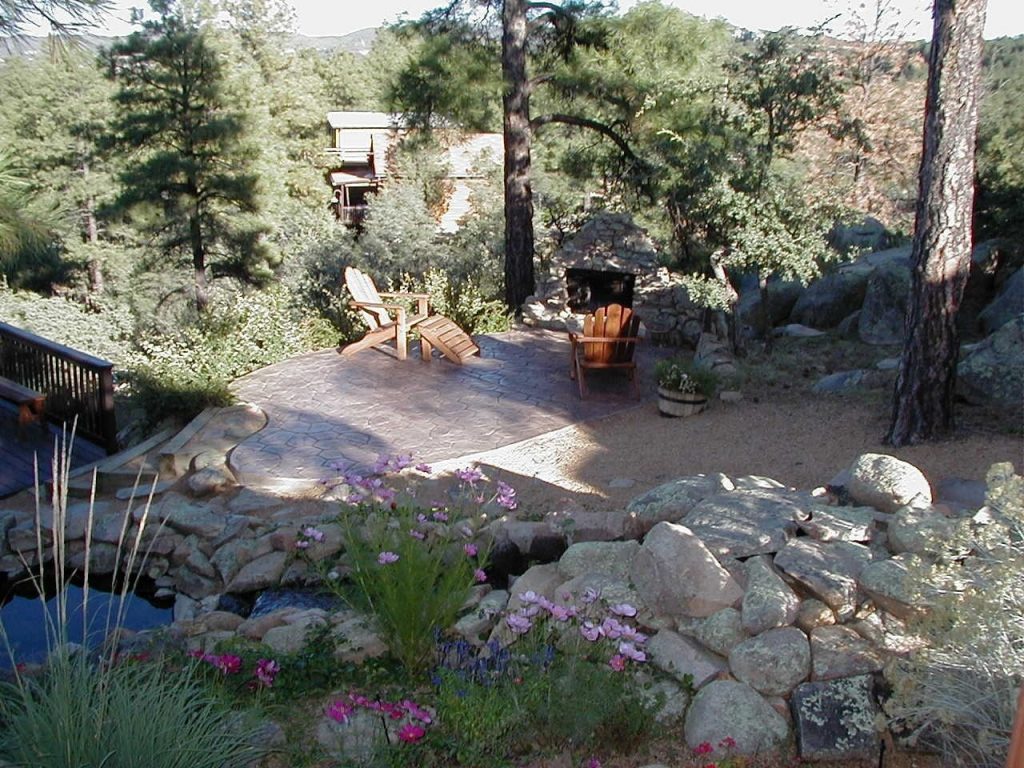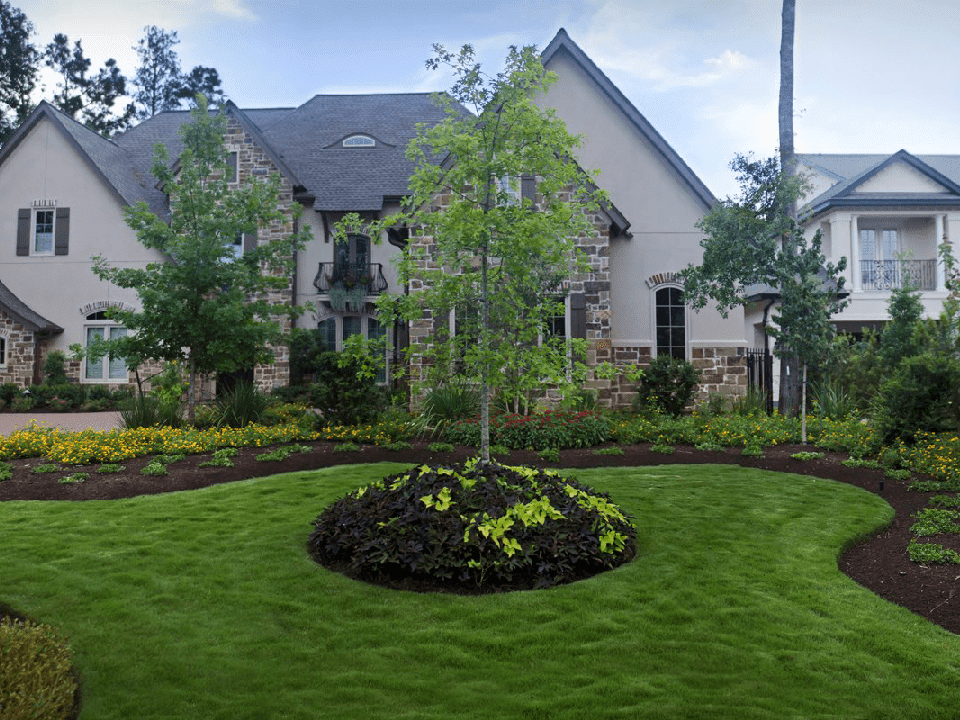Little Known Facts About Hilton Head Landscapes.
Little Known Facts About Hilton Head Landscapes.
Blog Article
A Biased View of Hilton Head Landscapes
Table of ContentsThe 8-Minute Rule for Hilton Head LandscapesThe 6-Minute Rule for Hilton Head Landscapes4 Simple Techniques For Hilton Head LandscapesAbout Hilton Head LandscapesWhat Does Hilton Head Landscapes Do?Examine This Report about Hilton Head LandscapesUnknown Facts About Hilton Head LandscapesSome Known Details About Hilton Head Landscapes
Form compatibility is also a major component of unity in designone or 2 noticeably different types benefit contrast and emphasis, yet generally all various other kinds must have some similarities for a linked appearance. Structure describes how rugged or fine the surface of the plant or hardscape product really feels and/or looks.
Instances of plants with rugged structure include philodendrons, agaves, bromeliads, hollies, hands, and hydrangeas. Hardscape with crude appearance includes rough-cut stone, rough-finished brick, and incomplete wood with knots and an elevated grain. Matured or old building product that preserves a weather-beaten surface area is typically coarse in texture. Attributes that create fine structure consist of little vegetation; slim, strappy leaves (grasses) or high, thin stems; little, dense branches and little branches; long stems (vines); and tiny, delicate blossoms.
The Single Strategy To Use For Hilton Head Landscapes
Most plants are medium structure, in that they can not be explained as having either coarse or great structure. Medium-textured plants act as a history to web link and combine the coarse- and fine-textured plants.

To make an area feel smaller sized, position the rugged structures along the outer boundary and the fine textures closest to the visitor. The detail of the rugged texture makes the plants show up closer and makes the area really feel smaller sized. The viewed texture of plants can likewise alter with the distance from the plant.
How Hilton Head Landscapes can Save You Time, Stress, and Money.
Strong colors enhance the contrast and make the texture show up coarser, while soft colors can flatten structure. Hardscape with a rugged texturesuch as very rough rocks and bold, large timberstends to make all plant product show up extra moderate distinctive. Developers often establish a structure research (Figure 8) theoretically to aid make a decision the arrangement of plant products.
Color in plant product and hardscape includes interest and range to the landscape. Color is the most obvious aspect in the landscape and is typically the focus of the majority of house owners; however, it is also the most temporary component, typically lasting only a couple of weeks a year for individual plants.
Hilton Head Landscapes Can Be Fun For Anyone
A simple description of the shade wheel includes the three primaries of red, blue, and yellow; the three second colors (a mix of two primaries) of environment-friendly, orange, and violet; and six tertiary colors (a mix of one nearby primary and second shade), such as red-orange. Shade theory explains the connection of shades to each other and exactly how they need to be made use of in a structure.

Comparable (occasionally called unified) color schemes are any kind of three to five shades that are surrounding on the color wheel, such as red, red-orange, orange, yellow-orange, and yellow, or blue, blue-violet, and violet (Landscaping bluffton sc). The shades relate per other due to the fact that they generally consist of 2 primaries blended to create a secondary and two tertiary shades, which suggests they share typical properties
They tend to have high contrast between them. One of the most common sets are violet and yellow, red and eco-friendly, and blue and orange. Corresponding shades are frequently discovered naturally in blossoms; an usual set is yellow and violet. Shade is located in the flowers, foliage, bark, and fruit of plants.
The 4-Minute Rule for Hilton Head Landscapes
Environment-friendly foliage in all its different shades is the leading shade by quantity, but various other shades catch attention quicker due to the fact that of their high comparison to the shade green. Shade is likewise found in buildings, rocks, pavers, timber, and furniture. Many shades in all-natural materials, such as rock and wood, are normally soft and often tend to be variants of brown, tan, and light yellow.
Colors have residential or commercial properties that can impact feelings, spatial assumption, light high quality, equilibrium, and focus. Trendy colors have a tendency to be relaxing and need to be used in areas for relaxation and peacefulness.
Hilton Head Landscapes Can Be Fun For Anyone
The "temperature" of colors can also influence the assumption of distance. Awesome colors often tend to decline and are regarded as being further away, making an area feel larger. Warm shades often tend to breakthrough and are perceived as being more detailed, making a room feel smaller. Color can additionally be utilized to capture interest and direct sights.
Bright yellow, which has the highest strength, also has a high comparison with all other colors (commonly described as a "pop" of shade) and must be used moderately. A percentage of intense shade has as much visual weight as a big amount of an extra suppressed or weak color.
Similar (often called harmonious) color pattern are any three to five shades that are surrounding on the color wheel, such as red, red-orange, orange, yellow-orange, and yellow, or blue, blue-violet, and violet. The shades relate to every various other since they commonly include two primaries blended to develop a secondary and two tertiary shades, which suggests they share typical homes.
Hilton Head Landscapes Can Be Fun For Anyone
Complementary colors are typically discovered normally in blossoms; an usual set is yellow and violet. Color is discovered in the blossoms, foliage, bark, and fruit of plants.
Eco-friendly foliage in all its different shades is the dominant shade by amount, but various other shades catch interest YOURURL.com quicker since of their high contrast to the shade eco-friendly - bluffton landscaping - https://www.imdb.com/user/ur184305432/. Shade is also discovered in structures, rocks, pavers, wood, and furnishings. The majority of colors in natural materials, such as rock and wood, are normally soft and tend to be variants of brownish, tan, and pale yellow
The Greatest Guide To Hilton Head Landscapes
Colors have residential or commercial properties that can impact emotions, spatial assumption, light quality, equilibrium, and emphasis. Awesome shades have a tendency to be calming and should be used in locations for relaxation and serenity.
Awesome shades often tend to decline and are regarded as being farther away, making a space really feel bigger. Shade can additionally be used to record attention and direct sights - https://www.tumblr.com/h1tnhdlndscps/754928253939187712/family-owned-and-operated-hilton-head-landscapes?source=share.
Intense yellow, which has the greatest intensity, also has a high comparison with all various other shades (commonly explained as a "pop" of color) and should be used moderately. A little amount of intense color has as much aesthetic weight as a large quantity of an extra restrained or weak shade.
Report this page